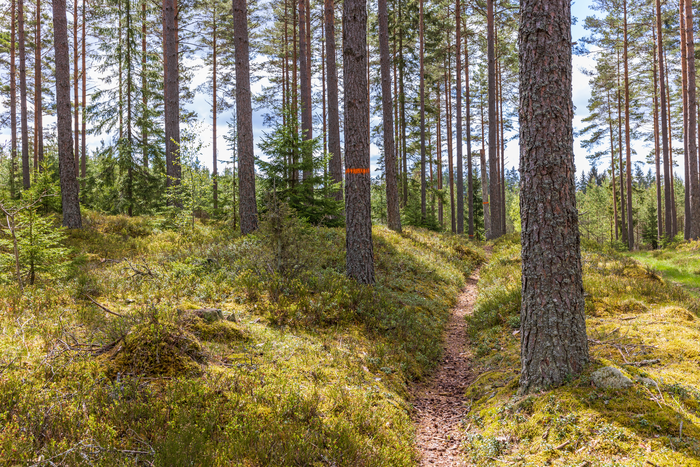Human history and cultural heritage in various places are often well researched and documented.

Credit: Lars Johansson
Human history and cultural heritage in various places are often well researched and documented.
A new anthology edited by three Swedish researchers explores what ties these places together – footpaths.
“They are unobtrusive remains, but with a very significant cultural footprint,” says Daniel Svensson, historian at Malmö University.
Pathways lead us forward as we walk along them and also take us back in history. These narrow thoroughfares are found the world over and are as old as humankind itself. But they are only preserved while they remain in use.
“Look but don’t touch is often the name of the game in museums that depict history or cultural heritage. But with pathways it’s the other way around: as long as we keep walking along these remains, they will still be there. Movement becomes part of a living cultural heritage,” says Daniel Svensson.
In the recently published anthology titled Pathways: Exploring the Roots of a Movement Heritage, Daniel Svensson has worked with Katarina Saltzman from the University of Gothenburg, and Sverker Sörlin from the KTH Royal Institute of Technology, to gather texts that describe pathways from a range of perspectives. 15 researchers from countries including India, Israel and the UK have provided a broad range, which has been divided into three parts with history, storytelling and cultural heritage as their themes.
Intangible pathways and cow paths
Although pathways are often overlooked, there is research that has examined pathways as historical remains. There are church paths and school paths as testaments to old patterns of movement in daily life, and coexistence with animals in a past agrarian society can be seen in cow paths that were also used by people. The book includes a chapter that looks at the old English Rights of Way. These rights have also been enshrined in written law, where a pathway that has been used for more than 20 years is considered to be public.
“In another chapter, pathways high in high alpine terrain function as an exhibition space along a mountain pass on the Austrian/Italian border which was a scene of battle in the First World War,” says Daniel Svensson.
The storytelling part of the book draws on examples from pilgrim trails where stories and legends about what happened to the pilgrims live on. There are also descriptions of entirely intangible pathways in computer games. In the early versions of the Zelda computer game, you had to take a certain pathway to progress in the game. Modern computer game worlds are often very extensive, and it can be hard to get an overview of them; players choose to navigate and move between important locations using pathways that they create in those worlds.
“The cultural heritage section in the book is where we bring something new to the table. We have a great amount of material cultural heritage, but pathways remain overlooked. Just as an old building in Gothenburg is important cultural heritage to many, so too can the 8 km trail in Skatås be cultural heritage to those who like to run along it. The movement itself becomes a form of cultural heritage,” says Sverker Sörlin, intellectual historian at KTH Royal Institute of Technology.
Rising value
When the editors requested articles for inclusion in the anthology, there were many researchers who felt called on to write something. According to the editors, pathways are being valued more and more.
Many of the farms in the Forest of the Finns region in northern Värmland have been preserved, but the pathways that ran between them were at risk of falling into oblivion after roads for cars took over as the transport routes. Now some of the old pathways have been selected for inclusion in the hiking trails found there.
“Pathways are living traces of the past. As new pathways come into being while others disappear, we often continue to tread where others have gone before us. Nevertheless, pathways have rarely been regarded as valuable cultural heritage, possibly because they are so discreet and impermanent,” says Katarina Saltzman, ethnologist and landscape researcher at the University of Gothenburg.
Pathways will remain in the future, but their use may change. We have started cycling on pathways when the mountains above the treeline.
“It’s difficult to preserve pathways for the future in a static state because they have to be used. If their use changes, then so does the pathway,” says Daniel Svensson.




